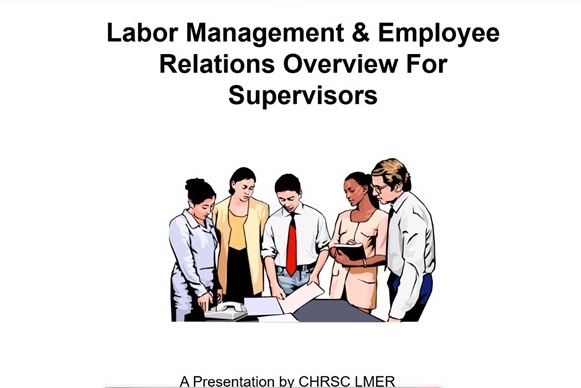By Miriam Rodriguez
WSMR Public Affairs

Supervisors at White Sands Missile Range attended the monthly Supervisory Lunch and Learn session May 3 via TEAMS.
During the session, the Labor and Management Employee Relations (L/MER) team provided information on how to address Labor-Management, addressing the bargaining unit workforce, and provided guidance on conduct and performance-based actions.
Supervisory Lunch and Learn: Labor and Management Employee Relations
Supervisors at White Sands Missile Range attended the monthly Supervisory Lunch and Learn session May 3 via TEAMS.
During the session, the Labor and Management Employee Relations (L/MER) team provided information on how to address Labor-Management, addressing the bargaining unit workforce, and provided guidance on conduct and performance-based actions.
Employee relations is the process of managing relationships in an organization.
The CHRSC LMER Team went over some concepts and principles to include the following:
Timely – Action must be taken promptly to be supportable and meaningful
Reasonable – Penalty must fit the offense
Consistent – Similar penalty for similar offense
Non-discriminatory – Action must be based on the merits of the case
When acting supervisors should ask themselves the following questions:
Is there a basis for adverse action? Burden and standards of proof.
Have the facts been established? Conduct the fact-finding investigation and identify the proper charges.
Does the penalty fit the offense? Table of penalties, range of options, performance, and progressive discipline.
Has the employee been properly informed of the action? Make sure the employee understands due process and is aware of who is the proposing and deciding official.
Case law says that misconduct does not have to involve a violation of written regulation or policy.
When providing burden and standard of proof there is an obligation to establish, through the introduction of evidence, facts or conclusions that are in controversy.
When providing standard of proof, the amount or level of proof required to establish a fact or support a determination. Examples of evidentiary standards include the following: Evidence beyond a reasonable doubt; clear and convincing evidence; preponderance of evidence; and substantial evidence. Provide clear and convincing evidence and provide substantial evidence.
When conducting administrative investigations make sure the purpose of a fact-finding investigation is to find out what really happened by establishing and proving facts.
Most of all remember that documentation is key to prove or disprove the facts.
The range of corrective actions whether informal, formal, and adverse actions can include the following: Counseling sessions (verbal/written); a written warning; letter of reprimand; suspension of 14 days or less; suspension of more than 14 days; and removal.
The CHRSC LMER Team provided information on submitting a request for action:
All new requests for correspondence related to LMER actions should be documented on the appropriate request forms and sent to their group email inbox found in Global under USARMY APG CHRA HQs Mailbox CHRSC for ATEC LMER.
All new Requests for Personnel Action for resulting personnel actions should go to: Enterprise LMER DCPDS inbox: XYZ-4CHRSC_LMER-COHD Display Name: CHRSC LMER GROUPBOX.
The next session is scheduled for June 6. Bring your lunch.




